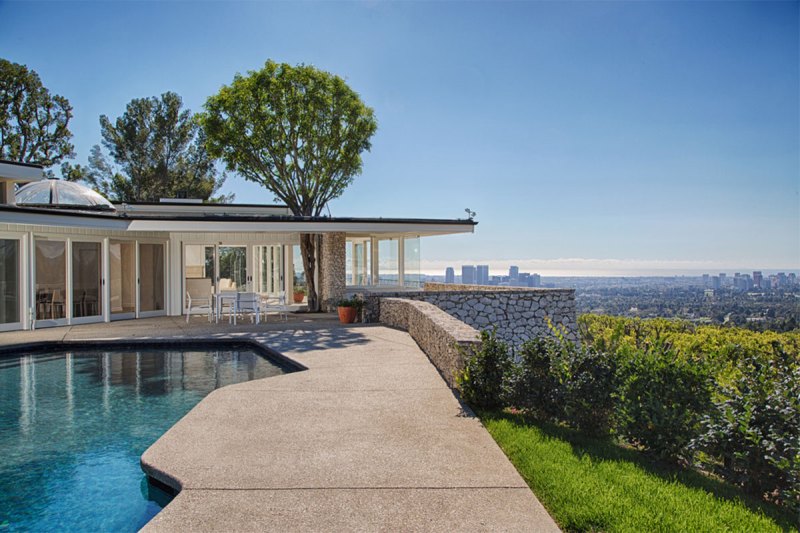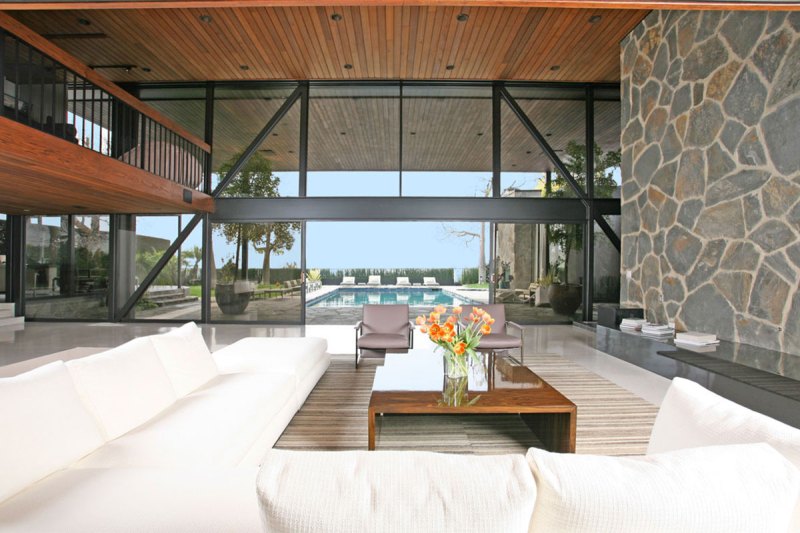Trousdale Estates is both the title of a gorgeous new book written by Steven Price and the name of a 410-acre development tucked into the northern tip a little city you may recognize called Beverly Hills.
I say gorgeous because Price’s book is, first and foremost, a coffee table book filled with stunning photographs of breathtaking homes. But to think of Trousadale Estates: Midcentury to Modern in Beverly Hills ($50, B&N) in the same manner one tends to attribute to the coffee table book — that is to say, a large tome to be leafed through and looked at but not truly read — is to do this book a disservice.

Let’s be clear: this book demands to be looked at. Before you get to the 25-plus page introductory section (accurately titled Prehistory) you will probably flip to a great number of the hundreds of pages filled with lurid images of lavish homes. Whether you’re a longtime aficionado of Midcentury design and drool over the architecture included in the book, or if you just want to see what people like Richard Nixon (who apparently got his home there for a third of its price…), Elvis Presley, Frank Sinatra, and Jennifer Aniston (to name only a few indeed) have called home, this book will not disappoint, even though some of the homes therein may offend with their opulence. Indeed Price initially considered naming his book Over the Top, which refers to much more than the lofty location of Trousdale Estates there in the hills and canyons between The Valley and Sunset Boulevard.
In other words, yes, it’s OK to gawk.
But don’t skip the writing, both in the longer initial introductory section or in the several pages that lead into each era the book covers (such as Launch Pad: 1950s or Helter Skelter: 1970s – 1990s), for in Price’s measured prose, which is backed by lifelong passion for architecture and deep study for this project, you will learn more than a few details about this or that multi-million dollar home, but can in fact glean information about larger trends — both architectural and social — that seem to play out over and over again as the generations proceed.

Price was generous enough to spend some time on the phone with me and our conversation proved revealing as I came to understand his motives for creating this book.
Trousdale Estates is much more than just a documentary resource covering a neighborhood in Los Angeles County, but is a love letter to an era now fading into the past and at risk of fading from memory. And this is a man who has long loved architecture–LA’s homes and buildings in particular. Born in Tarzana, Price spent his childhood and youth exploring Los Angeles at large, from Malibu to Hollywood to Beverly Hills and beyond. He came of age roughly at the same time as Trousdale Estates flourished and you can sense his genuine affinity for the masterpieces erected therein. Indeed architects including Frank Lloyd Wright and A. Quincy Jones designed homes there.
But tastes and times change.
In Price’s words, new developers are “not only disassembling the past, but dismantling the present and future” of the area. In recent years, many original Trousdale homes have been leveled and replaced with larger, less-original residences that cater to modern tastes. The new “bling box” tends to contain a checklist of features, such as the media room and the wine cellar, yet lacks the character that defined not only the classic homes of Trousdale Estates, but that were emblematic of the era.

In the 1950s and 60s, when most of the homes in the neighborhood were built, developers and clients alike valued openness and individuality. Most residences in Trousdale were large ranches with plentiful windows, expansive courtyards, and varied architectural stylings. You may find a Greco-Roman inspired mansion complete with colonnade in the lot next to a sleek and stripped-down modernist affair. The 410-acre Trousdale development was graded and prepared in one fell swoop in the 1950s, but first homes were being built there well into the 70s, thus the varied styles of the many residences there that, until Trousdale fell out of popular favor in the 1980s, defined its eclectic character.
There’s no need for me to discuss this or that included residence in detail, Mr. Price already wrote a book doing that. And while any great admirer of architecture will find himself or herself lost in the pages of Trousdale Estates, one need not be have a subscription to Architectural Digest to appreciate this volume. This book contains much more than the specs of a random mansion, and tells much more than the biography of a given home, though the celebrity resident stories do add much flavor to the pages. Trousdale Estates richly colors in the history of Beverly Hills, greater Los Angles, and, in many ways, the cultural history of the last six decades of American life.
We are, after all, in many ways revealed by the ways in which we live, or in the ways in which we aspire to live. If Trousdale Estates–the neighborhood–is anything, it is certainly an aspiration; that’s as true today as it was back when Paul Whitney Trousdale first developed the land. If Steven Price aspired to hold onto a piece of history while also revealing a few things about the zeitgeist, he has succeeded.




